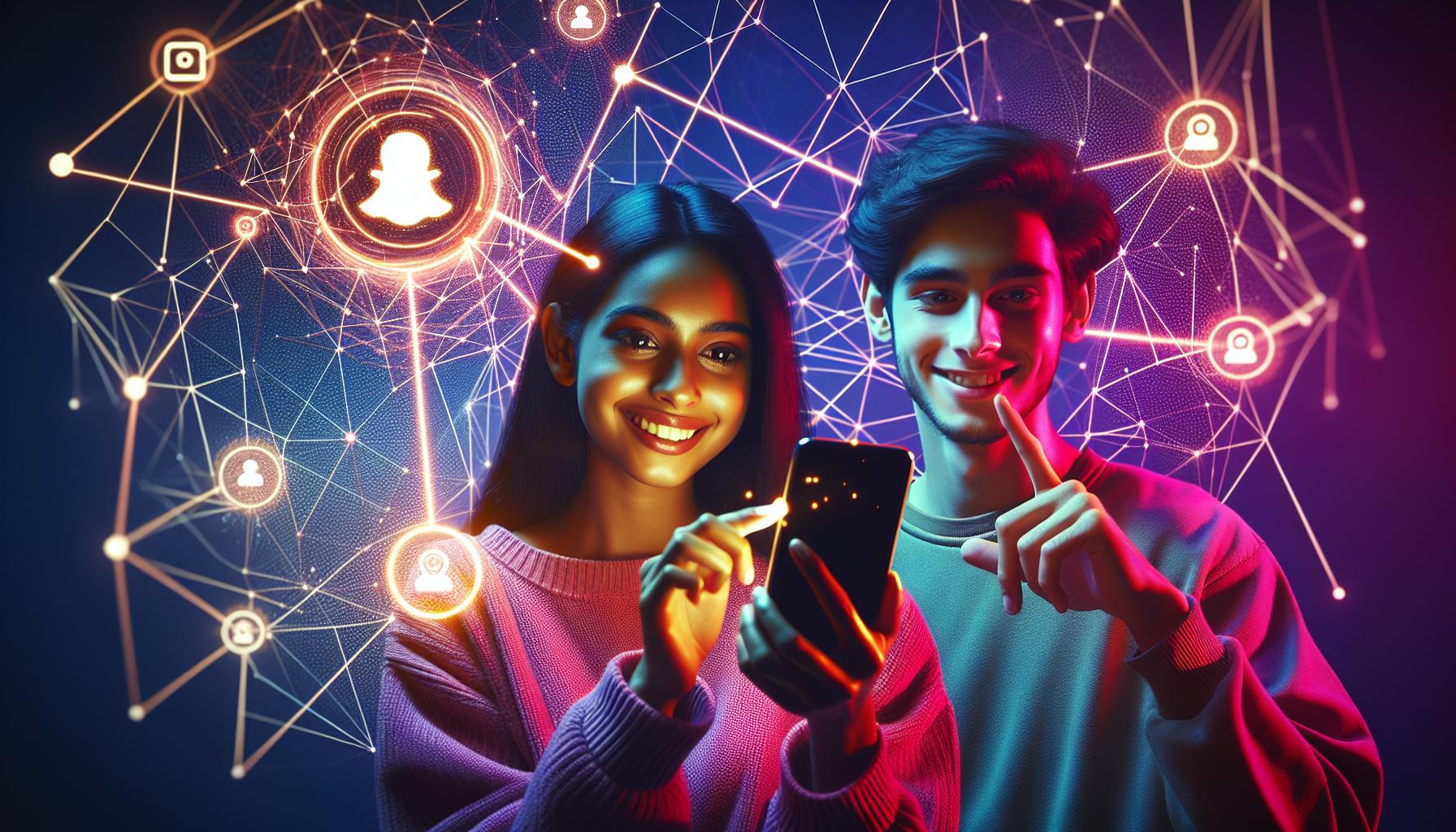In the ever-evolving world of social media, privacy concerns loom large, especially on platforms like Instagram. One question frequently asked is, “Can people tell when you screenshot their Stories?” This topic strikes at the heart of user experience and privacy, delving into myths and facts that affect how we interact online. Understanding the nuances can empower you to navigate Instagram Stories responsibly, whether you’re a casual user or a savvy marketer.
As you read on, you’ll explore the truth behind this common concern, what Instagram’s features reveal about user privacy, and how screenshot notifications can influence your engagement strategies. Stay curious; knowing the facts can enhance your confidence and creativity in sharing and interacting within the vibrant world of Instagram Stories!
Can You Actually See Who Screenshots Stories?

Instagram’s design emphasizes ephemeral content, yet many users are left wondering whether their stories can be captured permanently by others. One common question that arises is whether you can actually tell when someone screenshots your Instagram Stories. The answer is nuanced: as of now, Instagram does not notify users when someone takes a screenshot of their story, which means the act remains anonymous. This might bring relief to those who enjoy sharing more personal or sensitive moments without the anxiety of being monitored.
However, understanding this aspect is crucial for users concerned about privacy. Stories that disappear after 24 hours can feel like a safe space, allowing for playful or candid content. Unlike direct messages or posts, where interactions might be more easily tracked, the lack of screenshot notifications keeps your stories under a veil of privacy. Yet, keep in mind that even if you cannot detect a screenshot, users may still find creative ways to save or share your content, such as taking photos of their screens.
For those worried about how their stories might be used, it’s wise to tread thoughtfully. Sharing less personal information or opting for a private account can significantly enhance your control over your content’s visibility. Moreover, you can always tailor your audience for each story using features that allow only your close friends or select followers to view your posts. By being aware of these functionalities and the current limitations of screenshot notifications, you can navigate Instagram Stories more confidently, sharing moments you care about without unwanted attention.
Understanding Instagram’s Screenshot Notification Features
The mystery of whether your Instagram Stories can be captured without your knowledge looms large among users seeking a more secure sharing experience. Currently, Instagram does not provide any notifications when someone takes a screenshot of your story. This creates a sense of anonymity for those capturing your content, which can be both beneficial and risky, depending on what you share. Understanding how this feature works can empower you to navigate Instagram more effectively.
Moreover, while the absence of notification might seem freeing, it’s essential to remember that users can still find inventive ways to save or share your stories. Methods like screen recording or using another device to capture your screen are common practices that bypass any built-in protections Instagram offers. Hence, being mindful of the content you post is crucial. If you’re sharing sensitive or personal moments, consider specifying your audience through features like “Close Friends” when posting stories.
If you’re aiming to protect your content while using Instagram Stories, it’s beneficial to familiarize yourself with the platform’s privacy settings. Consider switching to a private account, where only accepted followers can see your stories, providing an added layer of security. Regularly review your followers and keep your friend list curated to maintain control over who engages with your content. Ultimately, knowledge of how screenshot notifications work, or lack thereof, is vital in equipping you to make informed decisions about your online presence.
The Myths Behind Instagram Story Privacy

Privacy on social media platforms can feel like a maze, particularly on Instagram, where the fleeting nature of Stories often raises concerns about content security. One common misconception is that if someone takes a screenshot of your Story, you will be notified. This belief can lead to an illusion of control, as users may think they can share personal moments without fear of exposure. However, this ‘notification feature’ does not exist for regular Stories, allowing followers to capture your content without any alert reaching you.
Understanding the Reality of Instagram Story Privacy
The truth is, while Instagram does notify users when someone takes a screenshot of a private message in Instagram Direct, this is not the case with Stories. Followers can freely take screenshots without any repercussions or notifications being sent your way. This lack of alert creates a misleading sense of security, as users often assume they have more control over their content than they actually do. Additionally, screen recording is a feature many smartphones possess, allowing for an easy workaround that completely circumvents Instagram’s intended privacy measures.
This leads to a range of behaviors and possible misunderstandings among users regarding what sharing a Story entails. For instance, users might feel more liberated to share sensitive moments, thinking that they won’t be captured, which can lead to regret if that content circulates unwittingly. The ability to capture content without knowledge creates a platform where careful consideration of what to post becomes essential. Always remember, once you hit ‘Share,’ you may be sharing your moment far beyond your intended audience.
Practical Steps for Enhancing Your Content Security
To better safeguard your Instagram Stories, consider these actionable tips:
- Create a “Close Friends” list: Use this feature for sharing more personal or sensitive content with only a trusted group.
- Regularly audit your followers: Keep your follower list curated to ensure you trust those who can view your Stories.
- Adjust privacy settings: Switching your account to private can limit exposure and provide an additional layer of protection.
- Monitor your content: Be conscious of the type of content you’re posting and anticipate how it may be perceived or utilized by others.
By adopting these practices, you not only enhance your Story privacy but also mitigate the risk of unintended sharing, empowering you to manage your Instagram narrative more effectively. Remember, while Instagram offers features that enhance engagement, the responsibility of protecting your personal moments ultimately lies with you. Stay informed, stay cautious, and most importantly, share wisely!
How to Tell If Someone Screenshotted Your Story

Determining whether someone has screenshotted your Instagram Story can feel like trying to catch smoke with your bare hands; it’s elusive and often frustrating. Unlike private messages where you receive a notification when a screenshot is taken, Instagram does not provide any alerts for screenshots of Stories. This means that you won’t receive any direct indication that someone has captured your content, leaving you susceptible to unwelcome sharing of your moments.
To mitigate the uncertainty of someone potentially screenshotting your Stories, consider adopting more strategic sharing methods. Start by using the “Close Friends” feature, allowing you to share more personal content with a trusted circle rather than broadcasting to all followers. Another key strategy is to actively manage your follower list-regularly review and curate who can see your Stories, ensuring a level of trust in your audience.
Moreover, keep in mind the broader implications of digital sharing. Once a Story is shared, it can be captured in various ways, including through screen recording-which operates seamlessly on most smartphones. Therefore, it’s wise to think carefully about the type of content you post. Always be conscious that these fleeting moments may not be as ephemeral as you hope, and sharing sensitive or personal content could lead to unforeseen circumstances if someone decides to capture and share your moment without your knowledge.
In essence, while you can’t tell if someone has captured your Story, you can take proactive steps to control who sees your content and what type of content you are willingly sharing. Emphasizing privacy is not just about attending to notifications; it’s about making informed choices on how and with whom you share your personal moments.
What Happens When You Screenshot Instagram Stories?
When a user takes a screenshot of an Instagram Story, nothing happens in terms of alerts or notifications, leaving it largely untraceable and a point of frustration for users who wish to maintain control over their content. Unlike private messages or disappearing messages in direct chats, where notifications of screenshots exist, Instagram has opted for a more hands-off approach with Stories. Consequently, a screenshot taken of your Story goes unnoticed unless the person chooses to inform you themselves.
This lack of notification means that the content you feel is ephemeral might not be as private as you think. Imagine sharing an intimate moment or a fleeting thought, only to find out later that someone captured it without your knowledge. This is where the challenge lies-not only are users unable to see who has accessed their content through a screenshot, but they also have no straightforward means of controlling its spread once it’s captured.
To navigate this uncertainty, consider using strategic content management techniques. For instance, if you’re sharing something that you wouldn’t want widely circulated, utilize the “Close Friends” feature. This allows you to create a smaller, more trusted audience for your Stories, significantly reducing the risk of unwanted sharing. Regularly auditing your followers and removing those who you may not fully trust can also enhance your privacy.
In an age where digital content can be easily captured and shared, it’s crucial to remain prudent about what you post. This means being aware that even if you cannot see who took a screenshot, repercussions can arise if that image falls into the wrong hands. Promoting a mindset of cautious sharing is vital, as it empowers you to control your narrative online and safeguard your personal moments from potential misuse.
Exploring Instagram’s Updates on Story Screenshots
In the ever-evolving landscape of social media, Instagram has maintained a focus on user privacy, particularly concerning the ephemeral nature of Stories. For many users, a common question arises: Can you truly tell when someone screenshots your Instagram Story? The short answer remains no; as of now, Instagram does not provide any notification when a user captures a screenshot of your Story. However, there have been updates and features introduced over time that are worth exploring, especially as users seek a better understanding of content protection.
Recent iterations of Instagram have showcased a shift towards enhanced privacy features for direct messages, where notifications do alert users when a screenshot is taken. This differentiation indicates that Instagram is aware of user concerns regarding content privacy, yet, in the case of Stories, there has been no similar move to implement notifications. This leaves users in a position of uncertainty, as there’s always the possibility that your carefully curated and temporary content may be saved and shared without your knowledge.
To address these privacy concerns, consider leveraging Instagram’s features strategically. The “Close Friends” list, for instance, allows users to share Stories with a more trusted circle. This way, you can ensure that sensitive or personal content reaches those whom you trust most, minimizing the risk of unwanted sharing. Additionally, staying informed about updates to Instagram’s policies and features can empower users to better safeguard their content.
Ultimately, in a digital world where screenshots can easily be taken, users must exercise caution in what they share through Stories. By understanding the current limitations of Instagram’s notification system and proactively using privacy features available on the platform, you can cultivate a more secure sharing experience.
User Reactions: A Look at Screenshot Etiquette
In the realm of Instagram, where moments are fleeting and visual storytelling reigns supreme, the question of screenshot etiquette emerges as a critical topic among users. With such a culture centered on sharing intimate snippets of life, many individuals find themselves pondering how capturing a screenshot might affect relationships and social dynamics on the platform. Surprisingly, most users remain unaware that Instagram does not notify users when someone takes a screenshot of their Story, leading to a spectrum of reactions and feelings about the practice.
Some users advocate for a “live and let live” approach, viewing screenshots as a harmless way to save content that resonates with them. For example, a well-crafted meme or an inspiring quote shared in a Story may prompt a follower to capture it for future reference. This perspective often hinges on a belief that if something is shared publicly, it is fair game for following or sharing, even if it’s captured via screenshot. However, others express discomfort with this practice, arguing that it undermines the ephemeral nature of Stories, which are designed to be temporary glimpses into one’s life.
Navigating the complexities of screenshot etiquette makes it essential for users to communicate openly about their preferences. Engaging in conversation about what is acceptable can not only clarify boundaries but also deepen trust among friends and followers. Some users choose to proactively address this by reminding their audience in their Story captions, perhaps playfully stating, “No screenshots, please!” This can help set expectations for the type of content they want to keep more private.
Ultimately, the lack of notification for screenshots might feel frustrating, yet it provides an opportunity for users to shape their Instagram experience intentionally. By being mindful of whom they share content with and how they engage with other users, individuals can cultivate a positive and respectful social media environment. As you share your life through Stories, remember to reflect on who your audience is, the intimacy of the content, and whether they are within the circle you wish to share with. Establishing clear communication about expectations surrounding screenshots can make the Instagram experience more enjoyable and aligned with your sharing philosophy.
Tips for Protecting Your Instagram Content
While sharing your life through Instagram Stories can be exciting, it’s crucial to consider ways to protect your content. Many users are unaware that Instagram does not notify you when someone screenshots your Story, making it even more vital to set boundaries and safeguard your images and videos. Here are some effective strategies to help you maintain control over your content while enjoying the platform.
First and foremost, be selective about what you share. Before posting, ask yourself if the content is something you would be comfortable with others saving or sharing. Consider using a private account – this way, only approved followers can see your Stories. To set your account to private, go to your profile, tap on the three horizontal lines in the upper right corner, select “Settings,” then “Privacy,” and turn on “Private Account.” This ensures greater control over who can access your content.
If you still want to maintain a level of exclusivity while posting more personal content, utilize Instagram’s Close Friends feature. This allows you to share Stories only with a select group of people. To set up Close Friends, go to your profile, tap on the three lines, and select “Close Friends.” Add those you trust, and when creating a Story, simply choose to share it with this group, ensuring your more sensitive moments are only viewed by trusted followers.
Lastly, inspire conversation among your followers about screenshot etiquette. You might want to include a playful statement in your Stories, like “Feel free to DM for the full scoop!” or “No screenshots, please!” This can serve as a subtle reminder of your boundaries and may foster discussions around respecting each other’s privacy. Remember, while Instagram Stories are designed to be temporary, your choices in what and how you share can create a more respectful environment for all users.
Alternatives to Instagram Stories for Privacy
While Instagram Stories provide a fun way to share ephemeral moments, they also come with privacy concerns, especially regarding the potential for screenshots. If you’re looking for alternatives that prioritize your privacy while still allowing you to share your life, there are several options to consider.
One popular alternative is Snapchat, known for its strong emphasis on privacy and disappearing messages. When you send a Snap, it disappears after being viewed, and the app notifies you if someone takes a screenshot. This immediate feedback adds a layer of security, making it easier to control who can keep your content. Additionally, Snapchat’s feature of Stories also allows you to share your moments for a limited time but with more robust privacy features.
Another option is WhatsApp Status, which lets you share photos, videos, and GIFs that disappear after 24 hours. Within WhatsApp, you have control over who can see your Status updates, allowing only selected contacts to view your shared moments. This is particularly useful for maintaining privacy while still engaging with friends and family.
If you’re inclined towards more creative expression without the fear of screenshots, consider starting a private blog or using a platform like Medium with restricted access. Here, you can share your stories in a controlled environment where you choose your audience. Similarly, platforms like Facebook offer options for sharing content to specific groups, ensuring only trusted friends and family can see your updates.
Lastly, if you’re seeking a platform dedicated to temporary content sharing, Fleek is an emerging app designed specifically for ephemeral content. By focusing on privacy and temporary visibility, it provides a safe space for users looking to share their lives without the worry of screenshots lingering online.
By exploring these alternatives, you can maintain a balance between sharing your experiences and prioritizing your privacy. Each option presents unique features that cater to your content-sharing style while safeguarding against the lingering digital footprint that screenshots can create.
Navigating Instagram’s Privacy Settings Effectively
Understanding how to navigate Instagram’s privacy settings is crucial for protecting your content and ensuring a comfortable sharing experience. Many users are concerned about potential screenshot notifications in Stories, which can have implications for privacy and trust within social connections. If you want to maintain control over your visibility without losing the fun aspects of social media, follow these steps to tailor your privacy settings effectively.
First, start by customizing who can view your Stories. You can easily limit your audience by accessing your profile. Tap on the three horizontal lines in the top right corner, select “Settings,” and then “Privacy.” From here, choose “Story” and customize your options for “Hide Story From” specific users, allowing you to filter who sees your ephemeral content. This feature not only enhances your privacy but also empowers you to share more openly with trusted friends.
Secondly, it’s essential to be aware of your account type. If you’re using a personal account, your privacy settings might differ from those available for business or creator accounts. Switching to a professional account opens up more insights about engagement and the types of interactions your content receives, which could inform how you wish to manage your Stories. You can access this option in “Settings” under “Account.”
Also, consider enabling the “Close Friends” feature. This tool allows you to share Stories exclusively with a selected group, giving you a safe space to post without worries about wider audience reactions or screenshots. Simply go to your profile, tap on “Close Friends,” and start adding the people you trust most to this list. When creating a Story, choose to share it with your Close Friends by selecting that specific audience before you post.
Lastly, always keep up to date with Instagram’s latest privacy updates. Instagram frequently rolls out new features, and being informed will allow you to make the best choices for your sharing strategy. For example, Instagram is continually evolving its privacy policies regarding how content is shared and reported. Following Instagram’s official blog or community updates can keep you in the loop and help you refine your approach.
By understanding and utilizing these privacy tools, you’re not just safeguarding your content-you’re also fostering a positive and controlled online environment that encourages authentic connections without fear of unintended exposure.
Q&A
Q: Can Instagram notify users if someone screenshots their story?
A: No, Instagram does not notify users when someone takes a screenshot of their stories. Despite common myths, users can safely capture screenshots without alerting the original poster. For detailed privacy settings, refer to the section on navigating Instagram’s privacy settings effectively.
Q: What happens if you take a screenshot of an Instagram Story?
A: When you screenshot an Instagram Story, the act is completely hidden from the story’s creator. They will not receive a notification, allowing users to freely save content without concern. For further insights, check out the details on what happens when you screenshot Instagram stories.
Q: Does Instagram show who viewed your stories?
A: Yes, Instagram allows users to see who viewed their stories. You can view this information by swiping up on your story. The visibility of viewers does not extend to notifying about screenshots, however.
Q: Are there any apps that inform users of screenshot activity on Instagram?
A: No authorized third-party apps can provide notifications or insights on screenshot activities for Instagram Stories. Most apps claiming to do so might compromise your account’s security. It’s advisable to keep privacy settings updated for optimal security.
Q: How can I protect my Instagram stories from being shared or screenshotted?
A: To safeguard your stories, use close friends lists to limit audience access. Additionally, consider using the “Add to Close Friends” feature for sharing more private content. For alternative methods, explore the tips for protecting your Instagram content section.
Q: Can I see if someone took a screenshot of my post?
A: Unlike Instagram Stories, regular post screenshots do not notify users. If you are concerned about privacy, focus on controls for your story and direct messaging settings. Check our articles on the myths behind Instagram story privacy for clarity.
Q: Do Instagram Direct Messages alert the sender about screenshots?
A: Yes, Instagram does notify users if someone screenshots a disappearing message (sent via Direct Message). For more on message privacy, explore our section about understanding Instagram’s notification features.
Q: What should I do if I want to share story content without others screenshotting it?
A: One approach is to utilize Instagram’s “Close Friends” feature when posting sensitive content. This way, you can restrict the audience and reduce the likelihood of unwanted screenshots. For alternate strategies, see the alternatives to Instagram Stories for privacy section.
In Summary
Now that you know the truth behind the myth of whether people can tell when you screenshot Instagram Stories, it’s time to leverage this knowledge. Whether you’re a casual user or a savvy marketer, understanding how privacy settings impact your interactions can enhance your Instagram experience. If you’re concerned about sharing stories without leaving a trace, explore our guide on downloading Instagram Stories anonymously to keep your favorites safe without the need for unwarranted attention.
Before you leave, check out our related articles on maximizing your Instagram engagement strategies and creating captivating Instagram Stories that hold your audience’s attention. Don’t forget to sign up for our newsletter for the latest tips and in-depth resources. Your privacy and creativity on Instagram matter, so take control of your experience and engage with our community. Have thoughts or experiences to share? Feel free to comment below and join the discussion! Your insights could help others navigate the social media landscape with confidence.




